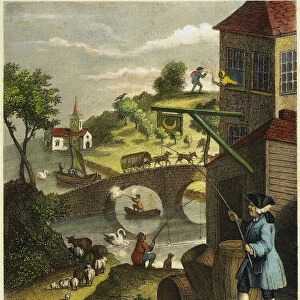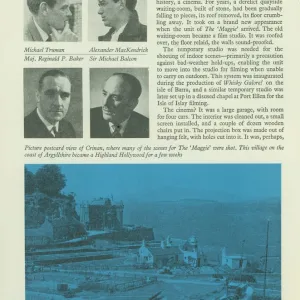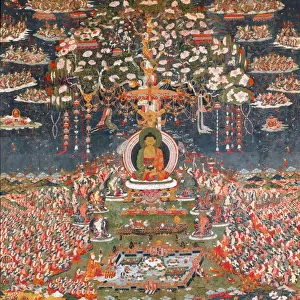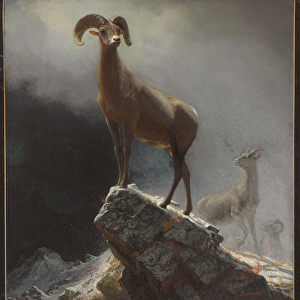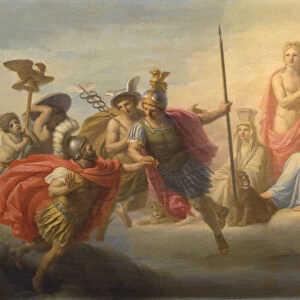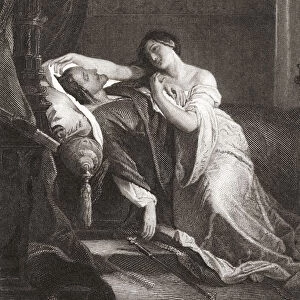Home > Europe > United Kingdom > England > Cleveland
Seated Amitabha, late 1500s-early 1600s. Creator: Unknown
![]()

Wall Art and Photo Gifts from Heritage Images
Seated Amitabha, late 1500s-early 1600s. Creator: Unknown
Seated Amitabha, late 1500s-early 1600s. This magnificent Buddha, called Amitabha (literally, " infinite light" ) is seated on a lotus pedestal with both palms facing up over crossed legs, suggesting that it is in a deep meditation. Originally, this scroll was acquired by the museum as a Korean work, but has now been reattributed as Ming period Chinese. One of the major reasons for this reattribution is that contemporaneous Korean works mostly depict this deity giving a sermon, surrounded by a large retinue of Buddhist guardians and celestial beings, rather than meditating. Stylistic elements that emphasize ornamentation, such as a chain of flying flames on its body halo and a multitiered throne festooned with colourful floral and geometric patterns also confirm the current reattribution
Heritage Images features heritage image collections
Media ID 19641617
© Heritage Art/Heritage Images
1368 1644 Hanging Scroll Ink And Colour On Silk Ming Dynasty
EDITORS COMMENTS
This print showcases a Seated Amitabha, believed to have been created in the late 1500s or early 1600s. The magnificent Buddha, known as Amitabha meaning "infinite light" is depicted in deep meditation on a lotus pedestal. Originally thought to be of Korean origin, this scroll has now been reattributed as a Ming period Chinese artwork. The reattribution was primarily based on the fact that contemporary Korean works typically depict this deity giving sermons surrounded by Buddhist guardians and celestial beings, rather than meditating. Additionally, stylistic elements such as an ornate body halo adorned with a chain of flying flames and a multi-tiered throne embellished with vibrant floral and geometric patterns further support its identification as Chinese. This hanging scroll, crafted during the Ming Dynasty (1368-1644), showcases exquisite artistry using ink and color on silk. Its intricate details highlight the skillful craftsmanship of the unknown creator who captured the essence of tranquility through Amitabha's serene posture and upward-facing palms. Preserved within The Cleveland Museum of Art's collection, this painting from Heritage Art/Heritage Images offers viewers an opportunity to appreciate both its historical significance and aesthetic beauty. As we gaze upon this remarkable piece, we are transported back in time to witness an era where spirituality intertwined seamlessly with artistic expression.
MADE IN THE USA
Safe Shipping with 30 Day Money Back Guarantee
FREE PERSONALISATION*
We are proud to offer a range of customisation features including Personalised Captions, Color Filters and Picture Zoom Tools
SECURE PAYMENTS
We happily accept a wide range of payment options so you can pay for the things you need in the way that is most convenient for you
* Options may vary by product and licensing agreement. Zoomed Pictures can be adjusted in the Cart.


